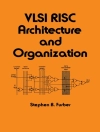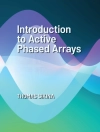Principles of Ad Hoc Networking presents a systematic
introduction to the fundamentals of ad hoc networks.
An ad-hoc network is a small network, especially one with
wireless or temporary plug-in connections. Typically, some of the
network devices are part of the network only for the duration of a
communications session or, in the case of mobile or portable
devices, while in some close proximity to the rest of the network.
These networks can range from small and static systems with
constrained power resources to larger-scale dynamic and mobile
environments. Wireless ad hoc networks facilitate numerous and
diverse applications for establishing survivable dynamic systems in
emergency and rescue operations, disaster relief and intelligent
home settings.
Principles of Ad Hoc Networking:
* Introduces the essential characteristics of ad hoc networks
such as: physical layer, medium access control, Bluetooth discovery
and network formation, wireless network programming and
protocols.
* Explains the crucial components involved in ad-hoc networks in
detail with numerous exercises to aid understanding.
* Offers key results and merges practical methodologies with
mathematical considerations.
Principles of Ad Hoc Networking will prove essential
reading for graduate students in Computer Science, Electrical
Engineering, Applied Mathematics and Physics as well as researchers
in the field of ad hoc networking, professionals in wireless
telecoms, and networking system developers.
Check out
www.scs.carleton.ca/~barbeau/pahn/index.htm for
further reading, sample chapters, a bibliography and lecture
slides!
สารบัญ
Preface.
Glossary.
1. Wireless Data Communications.
1.1 Signal Representation.
1.2 Analog to Digital Conversion.
1.3 Digital to Analog Conversion.
1.4 Architecture of an SDR Application.
1.5 Quadrature Modulation and Demodulation.
1.6 Spread Spectrum.
1.7 Antenna.
1.8 Propagation.
1.9 Ultrawideband.
1.10 Energy Management.
1.11 Exercise.
2. Medium Access Control.
2.1 Fundamentals of Probability and Statistics.
2.2 Modeling Traffic.
2.3 Multiple Access.
2.4 Demand Assigned Multiple Access.
2.5 Carrier Sense Multiple Access in IEEE 802.11.
2.6 Medium Access Control in ad hov Networks.
2.7 Bibliographic Comments.
2.8 Exercises.
3. Ad Hov Wireless Access.
3.1 Management of Bluetooth Networks.
3.2 Model for Node Discovery in Bluetooth.
3.3 Bluetooth Formation Algorithms.
3.4 Mesh Mode of Wi MAX/802.16.
3.5 Bibliographic Comments.
Exercises.
4. Wireless Network Programming.
4.1 Structure of Information.
4.2 Socket.
4.3 Parameters and Control.
4.4 Receiving Frames.
4.5 Sending Frames.
4.6 Exercises.
5. Ad Hov Networks Protocols.
5.1 Normal IP Routing.
5.2 The Reactive Approach.
5.3 The Proactive Approach.
5.4 The Hybrid Approach.
5.5 Clustering.
5.6 Quality of Service.
5.7 Sensor Network Protocols.
5.8 Exercises.
6. Location Awareness.
6.1 Geographic Proximity.
6.2 Constructing Spanners of ad hov Networks.
6.3 Information Dissemination.
6.4 Geographic Location Determination.
6.5 Random Unit Disc Graphs.
6.6 Coverage and Connectivity with Directional Sensors.
6.7 Bibliographic Comments.
6.8 Exercises.
7. Ad Hov Networks Security.
7.1 Authentication Techniques.
7.2 Physical Layer Attacks.
7.3 Security of Application Protocols.
7.4 Biometrics-based Key Establishment.
7.5 Routing Security.
7.6 Broadcast Security.
7.7 Secure Location Verification.
7.8 Security in Directional Antenna Systems.
7.9 Bibliographic Comments.
7.10 Exercises.
Bibliography.
Index.
เกี่ยวกับผู้แต่ง
Michel Barbeau is Professor in the School of Computer
Science at Carleton University, Canada. His topics of
interest are Telecommunications Software and Distributed Systems,
Mobile and Wireless Networks, Satellite Communications and Wireless
Security. Michel is on the editorial board of the Engineering
Letters of the International Association of Engineers, and has been
a co-chair and programme committee member of a number of scientific
conferences. Since 2003, he has led a major research project
entitled Complex Adaptive Networks for Computing and Communication
in the MITACS (Mathematics of Information Technology and Complex
Systems) NCE (Networks of Centers of Excellence).
Evangelos Kranakis is Professor in the School of Computer
Science at Carleton University, which he joined in 1991. He is
currently CNS (Communication, Networks, and Security) Theme Leader
in the MITACS NCE. He has published in the area of the
analysis of algorithms, bioinformatics, communication and data (ad
hoc and wireless) networks, computational and combinatorial
geometry, distributed computing, network security.












